Chapter 2 Our products
This chapter highlights some of our products released in 2017–18.
A full list of products released during the year is provided in Appendix 2.
Family, domestic and sexual violence in Australia 2018

This report is the AIHW’s first comprehensive report on family, domestic and sexual violence. It brings together information from more than 20 different data sources to build the evidence for what is known about this major health and welfare issue. The report explores the extent, impact and cost of family, domestic and sexual violence in Australia, and looks at what could be done to fill important data gaps.
Family violence includes physical violence, sexual violence and emotional abuse between family members, as well as current or former partners; domestic violence is a subcategory of family violence, involving current or former partners. Sexual violence includes a range of non-consensual sexual behaviours, perpetrated by partners, former partners, family members, acquaintances or strangers.
The report shows that women are more likely to experience violence from a known person in their home, whereas men are more likely to experience violence from strangers in a public place. Although men are victims of family, domestic and sexual violence, most victims are women. Some groups are at greater risk of these forms of violence, particularly young women, pregnant women, women separating from their partners, Indigenous women, women with disability and women experiencing financial hardship. Children who are physically or sexually abused are around 3 times as likely to experience domestic violence in later life as children who have not experienced or witnessed violence earlier in life.
The report is available at Family, domestic and sexual violence in Australia, 2018.
The report received considerable media mentions (over 200), including all major outlets and multiple television interviews. The report’s key findings were also referenced in other publications, such as the Australia’s National Research Organisation for Women’s Safety Fast Facts release, and the Council of Homeless Persons monthly magazine.
Teenage mothers in Australia 2015
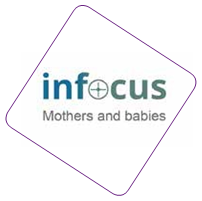
This is the first report on the teenage mothers’ population group (those aged under 20) using data from the National Perinatal Data Collection. The report summarises the characteristics of teenage mothers in Australia, as well as comparing the antenatal risk factors, labour and birth outcomes, and baby outcomes for teenage mothers with 20–24-year-old mothers.
This report indicates that of all babies born in Australia in 2015, 2.7% (8,268 babies) were born to teenage mothers, with nearly three-quarters (73.9%) of these mothers aged 18 or 19. Between 2005 and 2015, the teenage birth rate per 1,000 women aged 15–19 decreased by 35%.
Teenage mothers were 9 times more likely to live in low socioeconomic areas than in high socioeconomic areas. When compared with 20–24-year-old mothers, teenage mothers were more likely to smoke during pregnancy and their babies had poorer outcomes at birth, such as being born early (preterm) and being of low birthweight.
The report is available at Teenage mothers in Australia 2015.
Positive feedback was received from key stakeholders about the usefulness of this report in developing service planning and policy formulation at both the local and state levels.
Overweight and obesity suite of products

Overweight and obesity are major public health issues in Australia with significant health and financial costs. Following the release of Impact of overweight and obesity as a risk factor for chronic conditions in 2016–17, another 2 products relating to overweight and obesity were released by the AIHW in 2017–18.
A picture of overweight and obesity in Australia 2017 provides comprehensive up-to-date information on overweight and obesity. It summarises factors that influence people’s energy intake and expenditure and contribute to the rising prevalence of overweight and obesity, as well as some approaches aimed at reducing prevalence.
Almost one-quarter of children and two-thirds of adults are overweight or obese, and rates continue to rise, largely due to an increase in obesity specifically, which cost the economy $8.6 billion in 2011–12. Some groups were more likely than others to be overweight or obese, including those living outside major cities, Indigenous Australians and those in lower socioeconomic groups.
Overweight and obesity in Australia: a birth cohort analysis explores the prevalence of overweight and obesity by birth cohort to examine potential differences at a given age between people born most recently and those born 4, 8 and 20 years earlier. The novel analysis showed that adults in 2014–15 were significantly more likely to be obese than adults of the same age 20 years earlier.
A data visualisation tool accompanied these reports and is available at An interactive insight into overweight and obesity in Australia.
The tool enables overweight and obesity to be explored by age and sex at the national level, by selected population groups, and by Organisation for Economic Co-operation and Development (OECD) countries. Primary Health Network (PHN) analysis is also included. In addition, comparisons of overweight and obesity over time are presented.
A picture of overweight and obesity in Australia 2017 was the AIHW's fifth most downloaded publication in 2017–18.
The AIHW was invited to make a submission to the Senate Select Committee inquiry into obesity in Australia. Available statistics from these reports as well as upcoming reports on physical activity and nutrition will be included in the AIHW submission in July 2018.
Non-medical use of pharmaceuticals: trends, harms and treatment, 2006–07 to 2015–16

The use of pharmaceuticals for non-medical purposes is a growing problem. Pharmaceutical drugs used for non medical purposes can cause considerable physical, mental and social harms.
The report looks at 2 main types of prescription drugs: opioid analgesics (to treat pain and addiction to heroin and other opioids, and include morphine, codeine and tramadol) and benzodiazepines (to improve sleep and treat stress).
Over the past decade, there has been a substantial rise in the number of deaths involving a prescription drug, with drug-induced deaths more likely to be due to prescription drugs than illegal drugs. In 2016, there were 1,808 drug-induced deaths in Australia with benzodiazepines the most common single drug type, identified in 663 drug-induced deaths, followed by 550 deaths from other opioids (including prescription painkillers such as oxycodone, morphine and codeine).
The report shows that, in 2016, about 1 million Australians (4.8% of the total population) aged 14 or older had misused a pharmaceutical drug in the past 12 months, up from 3.7% in 2007. In 2016, the non-medical use of pharmaceuticals was higher than all illegal drugs, except cannabis (10.4%). Indigenous Australians were more than twice as likely to have recently used a pharmaceutical for non-medical purposes as non-Indigenous Australians.
Recent users of pharmaceuticals for non-medical purposes were also more likely than those who had not misused pharmaceuticals to experience mental illness (29.0% compared with 15.2%, respectively), chronic pain (15.9% compared with 10.3%), and high or very high levels of psychological distress (24.1% compared with 10.9%).
Internationally, the non-medical use of pharmaceuticals and resulting harms are also rising, including in the United States of America and Canada. The report is available at Non-medical use of pharmaceuticals: trends, harms and treatment 2006–07 to 2015–16.
This report raises awareness on the rise in use of pharmaceuticals for non-medical purposes and its associated harms, for service providers, policy makers and health care professionals.
National Social Housing Survey–detailed results 2016

The National Social Housing Survey (NSHS) 2016 is the most recent in a series of biennial surveys designed to gather information on social housing tenants and their housing experiences.
Results from the 2016 NSHS included that the majority of respondents (74%) reported that, overall, they were satisfied with the services provided by their housing organisation. The majority (81%) of respondents lived in a dwelling of an acceptable standard—with 4 or more working facilities and no more than 2 major structural problems.
Around 1 in 10 (11%) social housing respondents had experienced homelessness in the 5 years before the survey. Around 1 in 3 social housing households included at least 1 member with disability—that is, someone who ‘always’ or ‘sometimes’ requires assistance with self-care, body-movement or communication activities.
The reports are available at Housing assistance.
The NSHS complements other data about social housing in Australia, especially administrative data collected by social housing providers and reported by the AIHW. These administrative data provide valuable information about social housing programs, including the stock of dwellings, the characteristics of tenants and the extent to which people in special needs groups are able to access social housing.
GEN—a new website for information and data on aged care in Australia
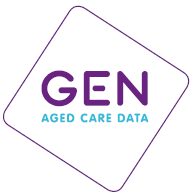
GEN—Aged Care Data is a one-stop-shop website that reports on capacity and activity in the aged care system focusing on the people, their care assessments and the services they use. GEN caters for students seeking information for assignments, right through to data modellers and actuaries.
GEN draws from the National Aged Care Data Clearinghouse (NACDC), which holds data about all recipients of government-funded aged care from 1997 onwards, including prior activity data for those in care in 1997.
Launched on 15 August 2017 by the Hon Ken Wyatt AM, MP, Minister for Aged Care and Minister for Indigenous Health, this AIHW ‘satellite’ site was the first to feature widespread implementation of the Tableau® visualisation functionality, now available on many other AIHW web pages.
Further information on the use of the GEN website is provided in Chapter 3 Our communications.
GEN has been very well received by stakeholders as a modern and user-friendly way to access data and information. GEN is available at GEN Aged Care Data
GEN is Australia's only central, independent repository of national aged care data.
Closing the Gap targets: 2017 analysis of progress and key drivers of change
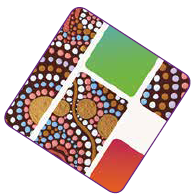
This report provides detailed information and analysis on the Closing the Gap targets, including the key drivers of change. It provides context for policy debate and discussion for the Closing the Gap Refresh, a joint initiative of the COAG in which all members have agreed to work in partnership with Aboriginal and Torres Strait Islander Australians to revise the Closing the Gap agenda.
The report summarises the evidence up to mid-2017 on progress towards meeting the 7 existing Closing the Gap targets and draws on data modelling and evidence from the literature to highlight the key factors associated with outcomes. The 7 target areas are child mortality, early childhood education, school attendance, literacy and numeracy, year 12 attainment, employment and life expectancy.
The report is available at Closing the Gap targets: 2017 analysis of progress and key drivers of change.
The analysis revealed a number of key themes across the targets that will be useful to consider in formulating the revised Closing the Gap agenda, namely:
- social determinants are critical
- remoteness has a relatively large impact
- improved access to services is needed
- investment is needed across the lifecourse
- interactions between outcomes are important
- more evidence on ‘what works’ is needed.
Northern Territory Outreach Hearing Health Program: July 2012 to December 2016

Hearing loss is more prevalent among Aboriginal and Torres Strait Islander people than non-Indigenous Australians, and continues to be an important health and social issue. Indigenous children are reported to have 2.9 times the rate of ear/hearing problems compared with non-Indigenous children, making hearing health especially important for these children.
This report presents information on ear and hearing health outreach services for Indigenous children and young people aged under 21 in the Northern Territory.
The report’s findings suggest that hearing health programs and services have improved the ear health outcomes of Indigenous children in the Northern Territory. For example, from July 2012 to December 2016, the percentage of children and young people:
- with at least 1 ear disease decreased by 15 percentage points (from 76% to 61%)
- with hearing loss decreased by 10 percentage points (from 55% to 45%).
The report and online tables are available at Northern Territory Outreach Hearing Health Program: July 2012 to December 2016.
This report has been made more accessible and timely than previous reports through the addition of infographics and extra figures, and by providing online data tables.
Australian Burden of Disease Study 2015: fatal burden preliminary estimates
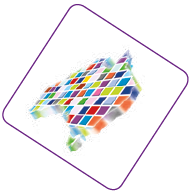
The Australian Burden of Disease Study 2015: fatal burden preliminary estimates is the first product to be released from the Australian Burden of Disease Study 2015. It is a data visualisation tool that provides interactive data displays of preliminary deaths and fatal burden estimates for over 200 diseases and injuries in Australia.
Fatal burden is a measure of years lost due to premature death from disease or injury and makes up the fatal component of burden of disease analysis which measures the impact of different diseases or injuries on a population. Burden of disease is an important resource for health policy formulation and service planning, and for monitoring population health.
The study estimates that 2.4 million years of life were lost (YLL) from all diseases and injuries in 2015. Leading causes of fatal burden for people aged under 45 were suicide, poisoning and road traffic injuries (motor vehicle occupants). Leading causes of fatal burden for those aged 65 and over were coronary heart disease, dementia and lung cancer. The rate of fatal burden from all diseases decreased by 19.6% between 2003 and 2015. Around 17% of the fatal burden experienced by the lowest socioeconomic group could have been avoided if they experienced the same rate of burden as the highest group.
The data visualisation tool is available at Australian Burden of Disease Study 2015: fatal burden preliminary estimates.
The tool enables fatal burden estimates for specific diseases or injuries to be explored by age and sex at the national level, by state/territory, remoteness area and socioeconomic group. In addition, comparisons of changes in fatal burden over time are presented.
Brain and other central nervous system cancers
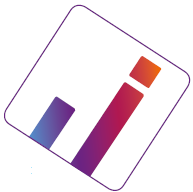
This is the first national report to present key data specific to brain and other central nervous system (CNS) cancers. While such cancers are rare, they have a substantial social and economic impact on individuals, families and the community. Non-malignant brain and other CNS tumours also cause significant morbidity and mortality.
The report estimates that approximately 2,100 new cases of brain and other CNS cancers were diagnosed in Australia in 2017 and 1,500 people died from these cancers. From 2009 to 2013, people diagnosed with brain and other CNS cancers had a 25% chance of surviving 5 years compared with their counterparts in the general population, while 5-year survival was 68% for all cancers combined. While 5-year survival rates for all cancers improved 20 percentage points over the last 30 years, there have been no clear improvements for brain and other CNS cancers.
Using data from 2011, the report reveals that the health burden of brain and other CNS cancers is significant, despite being relatively rare (representing just 1.5% of all cancers diagnosed). Brain and other CNS cancers are 17th on the list of most commonly diagnosed cancers, but are 6th when it comes to the causes of cancer burden and 96% of that burden is due to dying prematurely as a result of these cancers. Among children, this group of cancers is the second most common type diagnosed, and is the leading cause of cancer burden, with an even higher percentage attributed to early death (98%).
The report is available at Brain and other central nervous system cancers.
In 2017, there was a Commonwealth Government Inquiry into Funding for Research into Cancers with Low Survival Rates. The available statistics for low-survival cancers (including brain cancer) were included in a submission from AIHW to the Inquiry and AIHW cancer statistics were also cited in other organisations’ submissions to the Inquiry.
The statistics presented in the Brain and other central nervous system cancers report contributed to active policy discussions. In late 2017, the Australian Government established a $100 million Australian Brain Cancer Mission to double survival rates and improve the quality of life of people living with brain cancer over the next 10 years.
Private health insurance use in Australian hospitals 2006–07 to 2015–16—Australian hospital statistics
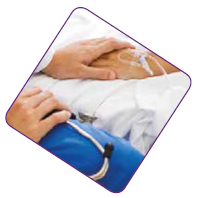
This report presents information on admitted patient separations (hospitalisations) that were completely or partially funded by private health insurance in Australia’s public and private hospitals. As not all services are available at all hospitals, particularly in regional and remote areas, sometimes the type of care required may determine which type of hospital is used.
Private health insurance-funded hospitalisations in public and private hospitals combined increased from 2.7 million in 2006–07 (36% of all hospitalisations) to 4.5 million in 2015–16 (42% of all hospitalisations), or an increase of 5.6% on average each year. This compares with a yearly average increase of 3.8% for all hospitalisations. Patients aged 85 and over had the largest percentage increase in private health insurance-funded separations in both public hospitals (15.0% on average each year) and private hospitals (10.5%).
In 2006–07, about 1 in 7 (14.0%) private health insurance-funded hospitalisations occurred in public hospitals, and this increased to about 1 in 5 (19.5%) in 2015–16.
For public hospitals, private health insurance-funded hospitalisations increased from 382,000 in 2006–07 (8.2% of hospitalisations) to 872,000 in 2015–16 (13.9%)—an increase of 9.6% on average each year.
For private hospitals, private health insurance-funded hospitalisations increased from 2.3 million in 2006–07 (80% of hospitalisations) to 3.6 million in 2015–16 (83%)—an increase of 4.9% on average each year.
The report is available at Private health insurance use in Australian hospitals, 2006–07 to 2015–16.
This report was the subject of considerable media coverage, and a wide range of stakeholders used the statistics; for example, media releases incorporating the statistics were issued by the Minister for Health, the Australian Healthcare and Hospitals Association, the Australian Private Hospitals Association, the Consumers Health Forum of Australia and the National Rural Health Alliance.
Health expenditure Australia 2015–16

This report is available as either an interactive data visualisation or as a ‘traditional’ report, similar to the previous editions of AIHW’s health expenditure reports, published annually over the last 33 years.
Total health expenditure (recurrent and capital expenditure combined) in 2015–16 was $170.4 billion—$6.5 billion (4.0%) higher in real terms than in 2014–15. This was the fourth consecutive year that growth in health expenditure was below the 10-year average (4.8% between 2005–06 and 2015–16). Growth in real total health expenditure per Australian ($7,096 in 2015–16) was also relatively low, at about 80% of the average annual growth rate over the decade (2.5% compared with 3.0%).
Total government health expenditure ($114.6 billion)—about two-thirds (67.3%) of all health expenditure—grew by 4.5% in real terms in 2015–16. This was the same as the average annual growth rate for the decade. Government expenditure on public hospital services was $46.9 billion (40.9% of total government expenditure) in 2015–16. In real terms, this was up from $44.3 billion the previous year—an increase of 5.7%. State and territory expenditure accounted for 52.5% of all sources of expenditure on public hospital services in 2015–16. In 2015–16, primary health care ($34.6 billion) accounted for 30.2% of all government expenditure—three-quarters of this was Australian Government expenditure (74.0%).
Non-government sources (individuals, private health insurance funds and other non-government sources) spent $55.8 billion on health in 2015–16 (32.7% of total health spending, down from 33.1% the previous year). Growth in non-government expenditure in 2015–16 (2.9%) was half the average annual real growth over the decade (5.5%). Expenditure by individuals accounted for 52.7% of non-government expenditure—down from 53.4% in real terms from the previous year—and represented 17.3% of total health expenditure, down from 17.7% in 2014–15.
The report is available at Health expenditure Australia 2015–16.
The high value of the Health expenditure Australia reports is reflected in their use to inform negotiations between the Australian Government and the states and territories in relation to the financing of Australia’s health system.



